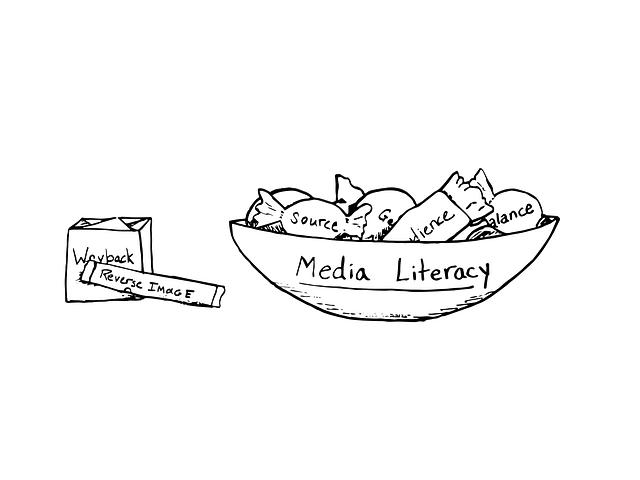In an era where information flows as swiftly as a river and opinions shape perceptions, the landscape of media in Pakistan has undergone a remarkable transformation. From its early days of state control to the dynamic embrace of digital platforms, the journey of Pakistani media reflects not just the evolution of a nation, but also the intricate tapestry of truth and trust woven into its fabric. As journalists navigate the tumultuous waters of political influence, public expectation, and technological advancements, the question of what constitutes truth has become increasingly complex. This article delves into the shifting paradigms of Pakistani media, exploring how the quest for credibility and transparency is reshaping its role in society. Through the lens of history and contemporary discourse, we will examine the challenges faced and the strides made in fostering a media environment that seeks to inform, enlighten, and empower the public while grappling with the fragile balance between freedom and responsibility. Join us on this insightful journey through the past, present, and future of Pakistani media, as we seek to understand its pivotal role in navigating the intricate realms of truth and trust.
The Historical Landscape of Pakistani Media and Its Role in Shaping Public Perception
The evolution of media in Pakistan has been a dynamic reflection of the nation’s socio-political landscape. From the early days of newspapers in the colonial period to the proliferation of television and radio, each phase has played a pivotal role in influencing public discourse. Notably, during critical political movements, media outlets often served as both platforms for activism and tools for governmental propaganda. The rise of social media has further transformed this landscape, enabling a new wave of citizen journalism where public narratives are crafted and disseminated rapidly across various digital platforms. This shift has allowed for a more diverse range of voices, although it has also given rise to challenges such as misinformation and polarization among the populace.
In exploring the media’s influence on public perception, it is essential to consider the historical context in which these outlets operate. Key factors include:
- Government Regulations: From censorship to licensing, various regimes have imposed restrictions that shape media output.
- Ownership Structures: Many media houses are controlled by political players or business tycoons, which can skew their reporting.
- Public Trust: The credibility of media sources has fluctuated, influenced by both sensationalism and journalistic integrity.
Examining these elements helps to understand how the media not only reports on events but also molds public opinion in profound ways.

Challenges of Credibility in the Age of Misinformation and Digital Evolution
The rise of digital platforms has democratized the dissemination of information, but it has also paved the way for a troubling wave of misinformation that challenges the very foundations of credibility in media. Users now navigate a vast ocean of content, where the line between fact and fiction often blurs. This era has birthed a multitude of voices, but not all are credible or responsible. Critical thinking has become essential for consumers of news, as they engage with sources that may prioritize sensationalism over accuracy. The implications are vast, leading to public confusion and a potential erosion of trust in traditional media outlets.
As Pakistan’s media landscape continues to evolve, it faces unique challenges influenced by local socio-political contexts. The proliferation of social media has amplified the speed at which information travels, allowing unverified claims to gain traction among audiences quicker than ever. To combat this, media organizations must employ innovative strategies to enhance their credibility, such as:
- Fact-checking initiatives to verify claims before publication.
- Transparency measures that outline sources and methodologies.
- User engagement through community-driven content to foster trust.
Moreover, partnerships between established media houses and digital platforms can play a crucial role in building a more informed society. It is imperative to navigate this complex landscape with a commitment to integrity and accuracy, ensuring that truth prevails amidst the digital cacophony.

Strategies for Fostering Media Literacy and Promoting Ethical Journalism
Fostering a culture of media literacy in Pakistan requires a multi-faceted approach that engages students, educators, and the wider community in meaningful discourse. Schools should incorporate media literacy programs into their curriculums, aiding students in recognizing different media formats, understanding their purposes, and evaluating the quality of information presented. These programs can include activities such as:
- Interactive Workshops: Hands-on sessions where participants analyze news articles and social media posts to discern fact from fiction.
- Debates and Discussions: Encouraging students to express their views on media bias and the impact of sensationalism.
- Collaborative Projects: Involving students in creating their own news segments or blogs to apply critical thinking skills in a practical context.
Moreover, promoting ethical journalism can significantly enhance public trust in media institutions. Journalists and news organizations should adhere to strict ethical guidelines that emphasize accuracy, fairness, and transparency. Establishing a code of ethics for journalists, along with ongoing training programs, can help to reinforce these values. Consider implementing initiatives aimed at:
- Fact-Checking Mechanisms: Establishing partnerships with independent fact-checking organizations to verify reports before publication.
- Transparency Reports: Media outlets can publish regular reports detailing their sources, funding, and editorial standards to build public trust.
- Audience Engagement: Encouraging reader input and feedback on journalistic practices to foster a community-oriented media landscape.

Building Trust through Transparency and Accountability in Reporting Practices
In an era where misinformation can proliferate at lightning speed, establishing credibility in media reporting has become paramount. Pakistani media organizations are increasingly recognizing that transparency and accountability are essential pillars for rebuilding public trust. By openly disclosing their sources, clarifying the processes behind their reporting, and engaging with audiences directly, news outlets demonstrate a commitment to integrity. Media platforms can foster a culture of openness through methods such as:
- Publishing internal editorial guidelines to illustrate their commitment to journalistic standards.
- Establishing ombudsman roles that allow an independent review of complaints and concerns raised by the public.
- Creating interactive forums where reporters and editors can respond to audience inquiries and feedback in real time.
Moreover, implementing standardized practices in the verification process can enhance accountability. When media outlets rigorously check facts and corroborate information before publication, it significantly reduces the risks associated with erroneous reporting. The introduction of transparency indices—metrics that assess and publicly communicate the quality of reporting practices—can serve as a foundation for building a more informed audience. Here’s a simple table showing key reporting practices alongside their corresponding impact on public trust:
| Reporting Practice | Impact on Trust |
|---|---|
| Fact-checking sources | Boosts credibility |
| Transparent correction policies | Enhances reliability |
| Community engagement initiatives | Strengthens relationships |
Final Thoughts
As we stand at the crossroads of information and influence, the journey of Pakistani media reflects a broader narrative of resilience and transformation. From the vibrant streets of Karachi to the bustling bazaars of Lahore, the evolution of media in Pakistan has been a testament to its capacity to adapt, innovate, and sometimes falter under the weight of expectation. As we have explored the complex tapestry of truth and trust, it becomes evident that the dialogue between media and society is ongoing, fraught with challenges yet rich with potential.
In an age where information travels faster than ever, the responsibility of nurturing trust falls upon both the media and its audience. It is the shared duty of journalists to uphold ethical standards, while consumers must cultivate critical thinking skills to discern fact from fiction. As this intricate relationship continues to evolve, one thing remains clear: the future of Pakistani media is not solely in the hands of its practitioners but also in the minds of those who consume it.
In navigating this landscape, we find hope in the dialogue that fosters a more informed public, a media landscape defined by integrity, and a society that values transparency. The road ahead may be uncertain, but it is also rich with possibilities. In the quest for truth and trust, each story told is a step towards a brighter tomorrow—one where the voice of the media and the wisdom of the masses harmoniously converge. As we turn the page on this chapter, may we each embrace our role in shaping a narrative that is not only reflective of our reality but also aspirational in its vision.



